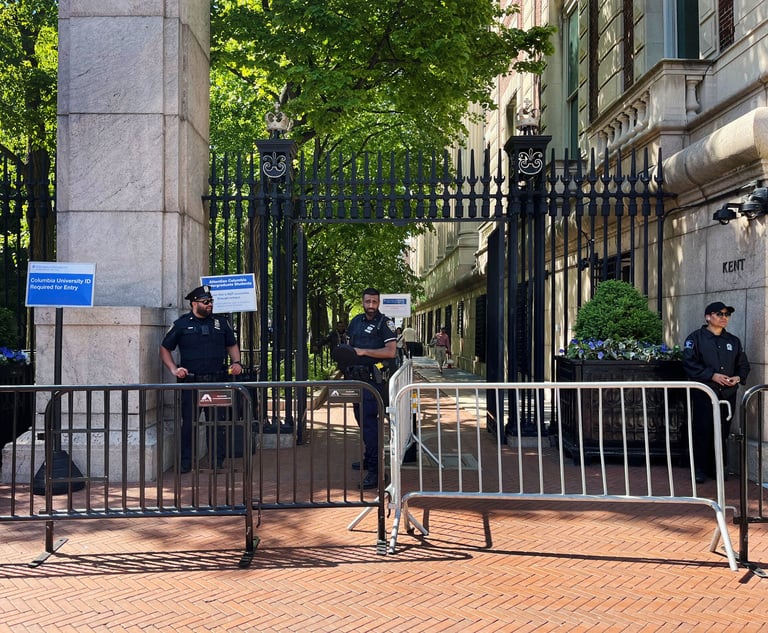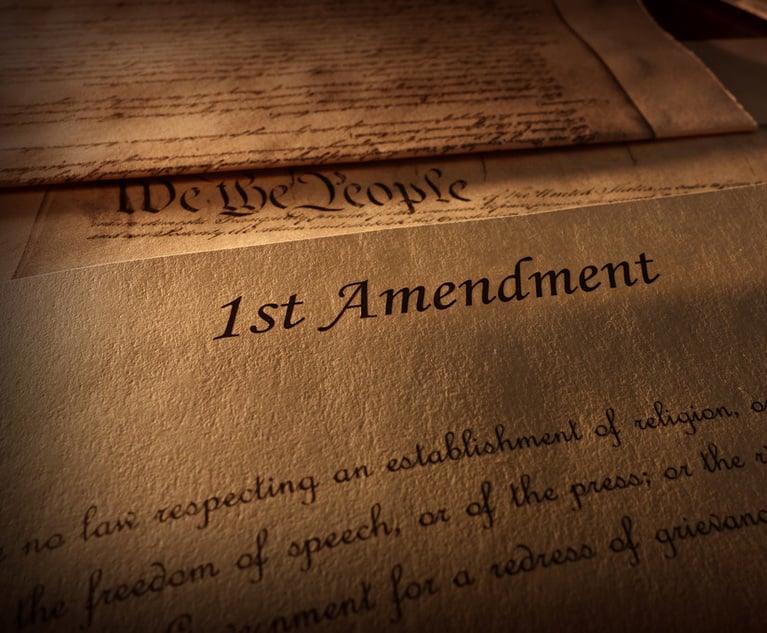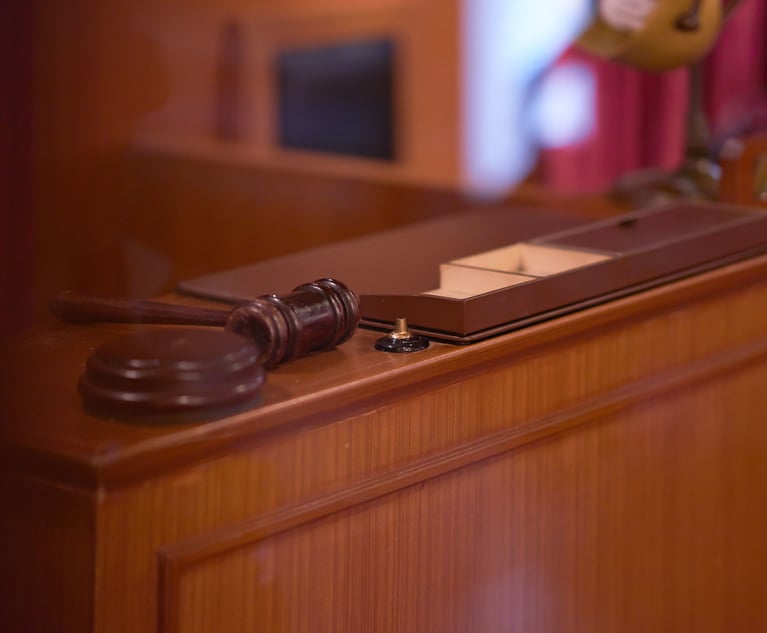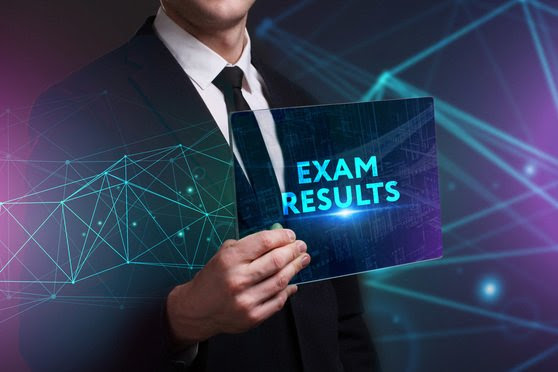Ahead of the Curve: The Bar Exam of the Future
The head of the National Conference of Bar Examiners' Testing Task Force discusses its work looking at the exam's future, and pundits weigh in on what the new enrollment data from the American Bar Association says about the state of legal education.
December 18, 2018 at 12:54 PM
9 minute read
Welcome back to Ahead of the Curve. I'm Karen Sloan, legal education editor at Law.com, and I'll be your host for this weekly look at innovation and notable developments in legal education. Just a heads up, Ahead of the Curve will take a break next week for Christmas but will be back in the New Year.
This week, I'm talking with Judge Cynthia Martin, who is heading up the National Conference of Bar Examiners' Testing Task Force, about the bar exam of the future. Next, we'll check out some early analysis around the web of the latest data on law school enrollment from the American Bar Association. Last, the faculty at Stanford Law School shares their must-reads in what I think is a charming holiday tradition.
Please share your thoughts and feedback with me at [email protected] or on Twitter:@KarenSloanNLJ
Bar Exam Sound Off
What subjects should the bar exam test? How should the test be delivered? And at what's the best time to administer the bar? Those are a few of the questions the National Conference of Bar Examiners' Testing Task Force is spending three years mulling over, in what is one of the most comprehensive evaluations of the all-important licensing exam on record. The task force is looking at the bar exam from just about every angle you can imagine. More specifically, it wants to know what skills new attorneys need to be successful in the 21st century practice of law and just how well—or not—the existing exam is doing gauging those skills. That's what task force chair Cynthia Martin, whose day job has her sitting on Missouri's Court of Appeals for the Western District, told me last week.
The bar exam has been making headlines once again (hello, California's dismal 40-percent July pass rate) and the task force is coming up on its first year in existence, so I thought it was a good time to check in with Martin about where things stand and where the task force is headed. She told me that the group spent its first months laying out the parameters of its inquiry, ultimately deciding that everything is on the table and that they wanted to look at every aspect of the test. They hired two independent research firms to aid in their work—the group wanted to avoid any criticism that the NCBE was defending its own product—and now the task force is moving into the first phase of its research, which focuses on stakeholder input.
The task force has scheduled a series of focus groups at industry events, including the Association of American Law Schools' annual meeting, the Uniform Bar Exam Forum, and the American Bar Association's midyear meeting. The stakeholder engagement phase will run through at least June, Martin said. I was curious to know whom, exactly, the task force wanted to hear from, and Martin told me it's casting a wide net. It wants input from: legal educators; bar examiners; practitioners, newly licensed lawyers; academic support faculty at law schools; bar administrators; state supreme court justices; and those who supervise new attorneys, among others. The task force is also soliciting written comments about the bar exam.
Once the task force has a gathered feedback on the bar exam, it will then turn its focus to the core competencies today's lawyers need. It will combine data from both phases of research to develop a series of recommendations to the NCBE's board about the future of the bar exam. Martin said there may be another public engagement phase once the primary research is complete. The task force aims to have its recommendations by 2021.
I was curious to know how much the low pass rates in recent years are driving the task force's work. But Martin said falling pass rates are the background for the inquiry, not the impetus.
“We're certainly aware of the pass rates,” Martin said. “How could we not be? But I don't think it would be fair to say this work is motivated by that fact. The exam that is being administered now is essentially the same exam that has been administered for a long time. Whatever variables influencing pass rates—at least in my humble opinion—are less driven by the exam and more driven by other factors and forces. But it underscores that this is an evolving profession.”
The takeaway—It's fair to say that some in legal education believe the NCBE will protect its exam at any cost. But I think Martin and her task force colleagues are truly coming at this inquiry with an open mind and desire to have an exam that is both relevant and feasible. I encourage those with issues and ideas about the exam to show up at a focus group or write a letter. There's never been a better time to make your voice heard.
Diving Into the ABA Enrollment Data
Last week brought the release of the official, national law school enrollment data from the American Bar Association. (That's like Christmas when you're a reporter covering legal education, but with giant excel spreadsheets instead of presents. I realize that this analogy doesn't make my job sound very fun. But it is. I promise!)
The headline was that first-year enrollment went up 3 percent, which is the first significant annual increase since 2010. You can read my story about that here. But there is lots of other interesting data included in the ABA's release of 509 disclosures. I'll be wading into some of that in the coming weeks, but I want to point to some interesting early analysis of the numbers from around the web.
First up, the always astute legal education observer Jerry Organ has a look at national transfer data, concluding that the number of law students transferring to other campuses continues to trend down. His analysis on TaxProf Blog shows that a mere 4 percent of students transferred this fall, down from the peak of 5.8 percent in 2013. Certain schools still dominate the transfer market, including Georgetown University Law Center; George Washington University Law School; Arizona state University Sandra Day O'Connor College of Law; and New York University School of Law.
Transfers may be down, but the number of non-J.D. students nationwide is soaring. The ABA reported an 8 percent increase in non-J.D. enrollment, which includes people in LL.M. and master's programs. (About one in seven enrolled students are not in a J.D. program.) Pepperdine law professor Derek Muller parsed the individual school data over at his blog Excess of Democracy to find which campuses have the most non-J.D. students. The University of Arizona James E. Rogers College of the Law tops the list, where a whopping 78 percent of students aren't pursing a J.D. That's not terribly surprising, however. Not only does Arizona have an LL.M. and master's program, but it's also the first ABA-accredited law school to offer a bachelor's in law for undergrads. Regent University School of Law and Liberty University School of Law also had non-J.D. enrollment above the 50-percent mark, Muller found.
And lastly, attorney David Frakt looks at the LSAT scores and undergraduate grades of the new 1L classes to determine the 10 “least selective schools.” His blog post over at The Faculty Lounge concludes that Western Michigan University Cooley Law School had the lowest standards, with an acceptance rate of 86 percent and median LSAT score of 142—despite running into trouble with the ABA last year over its admissions practices. Also on Frakt's list of least selective schools are Southern University Law Center and Texas Southern University Thurgood Marshall School of Law.
Stanford Law Faculty: “Grab a Good Book”
Here's an annual tradition I can get behind. Before the holidays, the faculty at Stanford Law School offers up a recommended reading list. Don't worry, it's not a plug for their casebooks. It's a mix of books on legal topics, biographies of interesting people, page-turning mysteries, and science fiction reads. Here are a few of the books that made the faculty's list:
➤➤Professor Henry Greely recommends Kim Stanley Robinson's Mars trilogy, three (fictional) books published in the 1990s that track 200 years of humans' colonization of Mars.
➤➤Professor Barbara Babcock's suggestion of Stanford Law alum Andrew Coan's Prosecuting the President: How Special Prosecutors Hold Presidents Accountable and Protect the Rule of Law remains in the legal sphere.
➤➤Professor Nora Freeman Engstrom recommends John Carreyrou'sbestselling book about the rise and fall of biotech startup Theranos, Bad Blood: Secrets and Lies in a Silicon Valley Startup
➤➤For mystery buffs, Professor Richard Thompson Ford suggests The Magpie Murders by Anthony Horowitz.
Extra Credit Reading
The National Association for Law Placement has overhauled its on-campus recruiting guidelines this year, relaxing timelines for firms courting law students and how long students can keep summer associate offers open.
Come September, the Law School Admission Test will be fully digital, with Microsoft Surface Go tablets replacing the traditional paper and pencil exam.
Despite earlier reports, the number of Asian applicants to law school has not declined faster than other racial groups, according to a new study from the Law School Admission Council.
Thanks for reading Ahead of the Curve. Sign up for the newsletter and check out past issues here. I'll be back in two weeks with more news and updates on the future of legal education. Until then, keep in touch at [email protected]
This content has been archived. It is available through our partners, LexisNexis® and Bloomberg Law.
To view this content, please continue to their sites.
Not a Lexis Subscriber?
Subscribe Now
Not a Bloomberg Law Subscriber?
Subscribe Now
NOT FOR REPRINT
© 2025 ALM Global, LLC, All Rights Reserved. Request academic re-use from www.copyright.com. All other uses, submit a request to [email protected]. For more information visit Asset & Logo Licensing.
You Might Like
View All



Trending Stories
- 1BOI Reports: What Business Owners and Attorneys Should Know
- 2SurePoint Acquires Legal Practice Management Company ZenCase
- 3Day Pitney Announces Partner Elevations
- 4The New Rules of AI: Part 2—Designing and Implementing Governance Programs
- 5Plaintiffs Attorneys Awarded $113K on $1 Judgment in Noise Ordinance Dispute
Who Got The Work
J. Brugh Lower of Gibbons has entered an appearance for industrial equipment supplier Devco Corporation in a pending trademark infringement lawsuit. The suit, accusing the defendant of selling knock-off Graco products, was filed Dec. 18 in New Jersey District Court by Rivkin Radler on behalf of Graco Inc. and Graco Minnesota. The case, assigned to U.S. District Judge Zahid N. Quraishi, is 3:24-cv-11294, Graco Inc. et al v. Devco Corporation.
Who Got The Work
Rebecca Maller-Stein and Kent A. Yalowitz of Arnold & Porter Kaye Scholer have entered their appearances for Hanaco Venture Capital and its executives, Lior Prosor and David Frankel, in a pending securities lawsuit. The action, filed on Dec. 24 in New York Southern District Court by Zell, Aron & Co. on behalf of Goldeneye Advisors, accuses the defendants of negligently and fraudulently managing the plaintiff's $1 million investment. The case, assigned to U.S. District Judge Vernon S. Broderick, is 1:24-cv-09918, Goldeneye Advisors, LLC v. Hanaco Venture Capital, Ltd. et al.
Who Got The Work
Attorneys from A&O Shearman has stepped in as defense counsel for Toronto-Dominion Bank and other defendants in a pending securities class action. The suit, filed Dec. 11 in New York Southern District Court by Bleichmar Fonti & Auld, accuses the defendants of concealing the bank's 'pervasive' deficiencies in regards to its compliance with the Bank Secrecy Act and the quality of its anti-money laundering controls. The case, assigned to U.S. District Judge Arun Subramanian, is 1:24-cv-09445, Gonzalez v. The Toronto-Dominion Bank et al.
Who Got The Work
Crown Castle International, a Pennsylvania company providing shared communications infrastructure, has turned to Luke D. Wolf of Gordon Rees Scully Mansukhani to fend off a pending breach-of-contract lawsuit. The court action, filed Nov. 25 in Michigan Eastern District Court by Hooper Hathaway PC on behalf of The Town Residences LLC, accuses Crown Castle of failing to transfer approximately $30,000 in utility payments from T-Mobile in breach of a roof-top lease and assignment agreement. The case, assigned to U.S. District Judge Susan K. Declercq, is 2:24-cv-13131, The Town Residences LLC v. T-Mobile US, Inc. et al.
Who Got The Work
Wilfred P. Coronato and Daniel M. Schwartz of McCarter & English have stepped in as defense counsel to Electrolux Home Products Inc. in a pending product liability lawsuit. The court action, filed Nov. 26 in New York Eastern District Court by Poulos Lopiccolo PC and Nagel Rice LLP on behalf of David Stern, alleges that the defendant's refrigerators’ drawers and shelving repeatedly break and fall apart within months after purchase. The case, assigned to U.S. District Judge Joan M. Azrack, is 2:24-cv-08204, Stern v. Electrolux Home Products, Inc.
Featured Firms
Law Offices of Gary Martin Hays & Associates, P.C.
(470) 294-1674
Law Offices of Mark E. Salomone
(857) 444-6468
Smith & Hassler
(713) 739-1250










